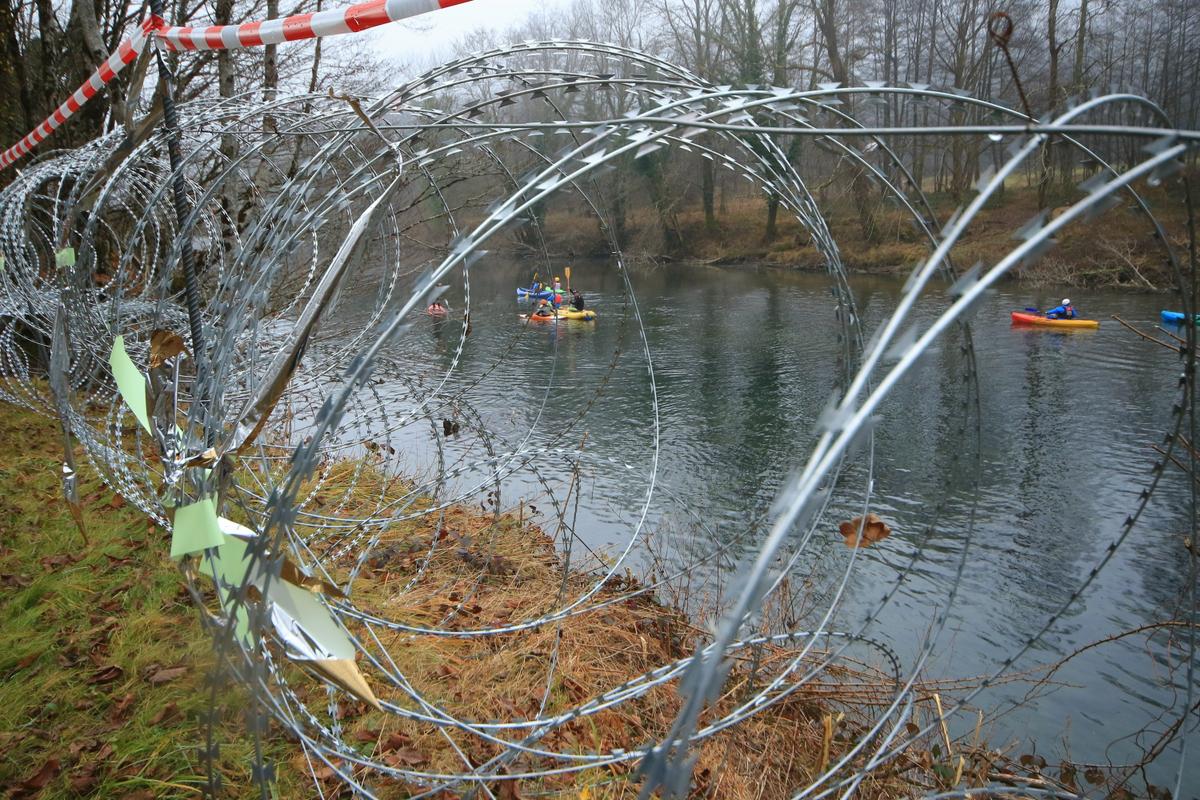
The price of the replacement of razor wire with panel fences is not known, as the number of kilometres of the razor wire fence to be replaced has not been established yet. According to Ukom, usable wire will be stored, and unusable destroyed.
Presently there are approximately 176 kilometres of wire and panel fence at different locations, from the border crossing Gibine in the municipality of Razkrižje to the Dragonja river valley in the municipalities of Piran and Koper, was explained to MMC by the Government Communication Office (Ukom).
Almost 20 kilometres of razor wire have already been replaced by panel fences, and in agreement with the municipalities the replacement is continuing at the Police Directorates of Murska Sobota, Maribor, Celje, Novo mesto, Ljubljana and Koper. The question whether the government plans to replace the remaining 156 kilometres of the fence, and at which price, remains unanswered, as it depends on the number of kilometres of the technical obstacles to be replaced. The entire length of the wire will not be replaced, however.
Government estimates that the situation is not stable yet
We were also interested whether the intention announced by the government that the wire, i.e. obstacles would be removed should the migrant flow diminish before autumn would be put into effect. "The future decisions on erecting temporary technical obstacles depend on development of the situation, and the risks which were the reason for placing the obstacles," was the answer to our question. They drew attention to the constant flow of people from Turkey to Greece. Greece is not in complete control of the situation, as there is still more than 50,000 migrants in the country. The situation in Macedonia is not stable either.
"We should point out, however, that other measures are being taken as well, as the fence or technical obstacles along the entire border most certainly would not solve all the problems. The Slovenia's land border with Croatia is 670 kilometres long, and the fence was erected in places where the configuration of the terrain allowed it. For example, the border between Hungary and Serbia is much shorter, and although the configuration of the terrain (flat land) made it possible for Hungary to erect a fence along the entire border, every day up to several hundreds of migrants cross the border. It means that a physical barrier is not the only assurance and the solution of the problem with increased flow of migrants," they added.

































































